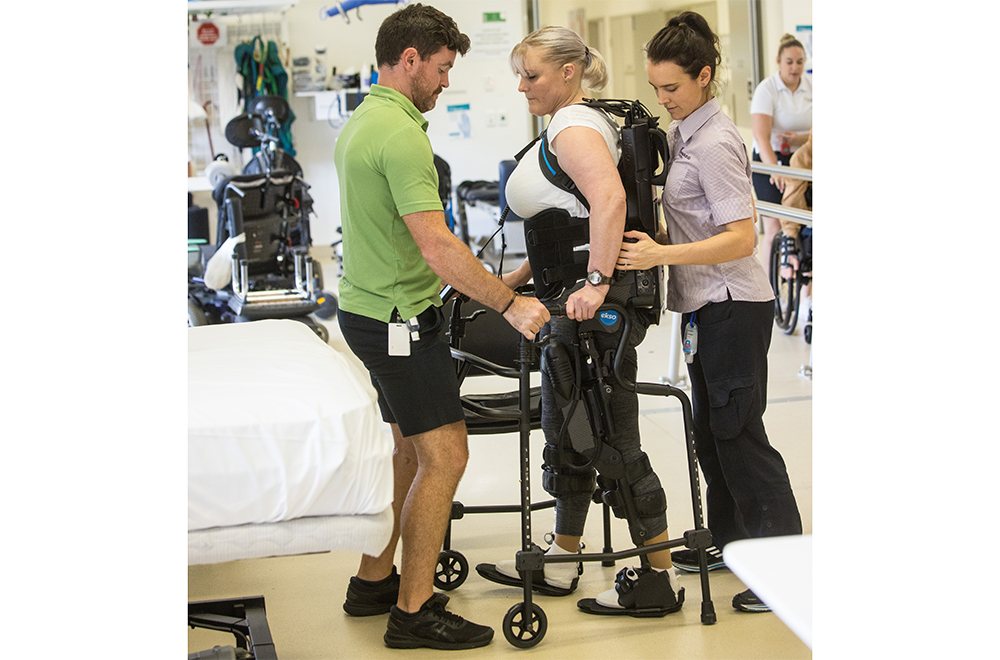Royal Rehab in Sydney has become the first rehabilitation centre in Australia to have EksoNR, an advanced robotic exoskeleton, which could be a gamechanger for people following incomplete spinal cord injury, acquired brain injury and stroke or neurological conditions including Parkinson’s disease and multiple sclerosis. The exoskeleton not only gives assistance with walking and standing but is specifically designed for rehabilitation.
Patients using the EksoNR need to be actively participating for the technology to function. Physical therapists can customise the amount of support that the machine provides to each leg. Walking with the device gets the muscles moving in the correct way, which is important because it helps to stay on the right track. It also drives the brain’s ability to adapt and change as a result of experience, also known as brain plasticity. After use with the EksoNR, the brain retrains the muscles on how to correctly move when walking.
Royal Rehab CEO, Matt Mackay said technology breakthroughs for people living with life-changing conditions and injury, have until now been unavailable in Australia.
“Robotics, virtual reality and exoskeletons are an integral part of programs in other countries because they can accelerate recovery and mobility to a whole new level. Australian patients now have access to this potentially life-changing technology,” he said.
The EksoNR has unique data and measurement capabilities, capturing walking time, distance and speed from each patient’s session and saves it onto a dashboard. This allows the therapist and patient to accurately measure progress throughout the rehabilitation journey.
It features smart assist software for therapists to vary the support of the device for each leg independently, from full support to free walking, enabling rehabilitation to a large range of patients, from those who have less strength to those who are nearly independent.
The EksoNR has programs to help patients balance, squat and step in place to familiarise themselves with the technology and how it works before they start walking. Without assistance from the EksoNR, many patients walk in a way that attempts to compensate for weaker muscle function. Sensors and software continuously monitor and regulates leg movement to minimise incorrect patterns, improving the ability to move more effectively.
The equipment takes users back to the very beginning and lets them feel how their muscles should be moving without risk of falling or relying on their own coping mechanisms for moving.

